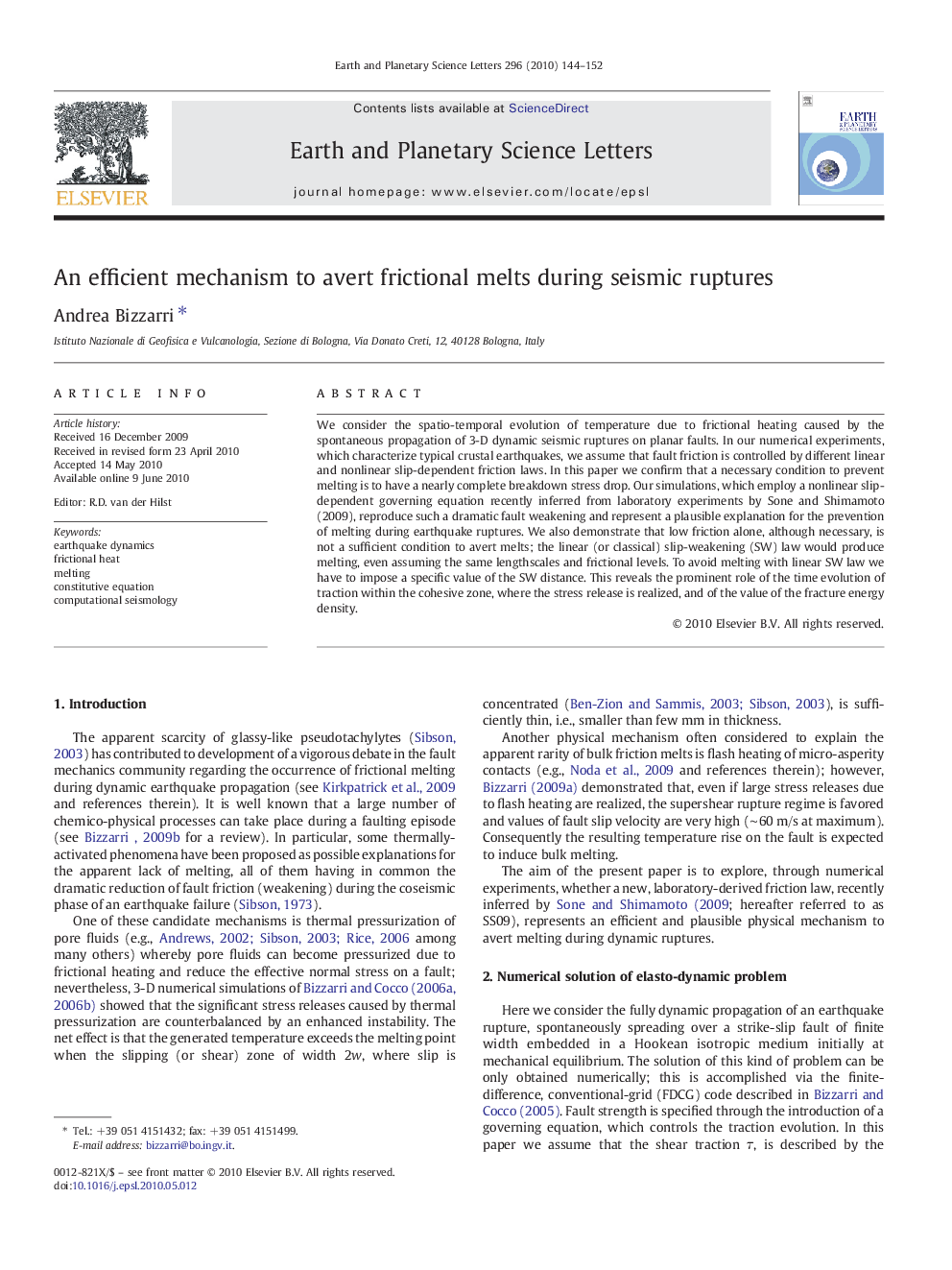| Article ID | Journal | Published Year | Pages | File Type |
|---|---|---|---|---|
| 4678569 | Earth and Planetary Science Letters | 2010 | 9 Pages |
We consider the spatio-temporal evolution of temperature due to frictional heating caused by the spontaneous propagation of 3-D dynamic seismic ruptures on planar faults. In our numerical experiments, which characterize typical crustal earthquakes, we assume that fault friction is controlled by different linear and nonlinear slip-dependent friction laws. In this paper we confirm that a necessary condition to prevent melting is to have a nearly complete breakdown stress drop. Our simulations, which employ a nonlinear slip-dependent governing equation recently inferred from laboratory experiments by Sone and Shimamoto (2009), reproduce such a dramatic fault weakening and represent a plausible explanation for the prevention of melting during earthquake ruptures. We also demonstrate that low friction alone, although necessary, is not a sufficient condition to avert melts; the linear (or classical) slip-weakening (SW) law would produce melting, even assuming the same lengthscales and frictional levels. To avoid melting with linear SW law we have to impose a specific value of the SW distance. This reveals the prominent role of the time evolution of traction within the cohesive zone, where the stress release is realized, and of the value of the fracture energy density.
